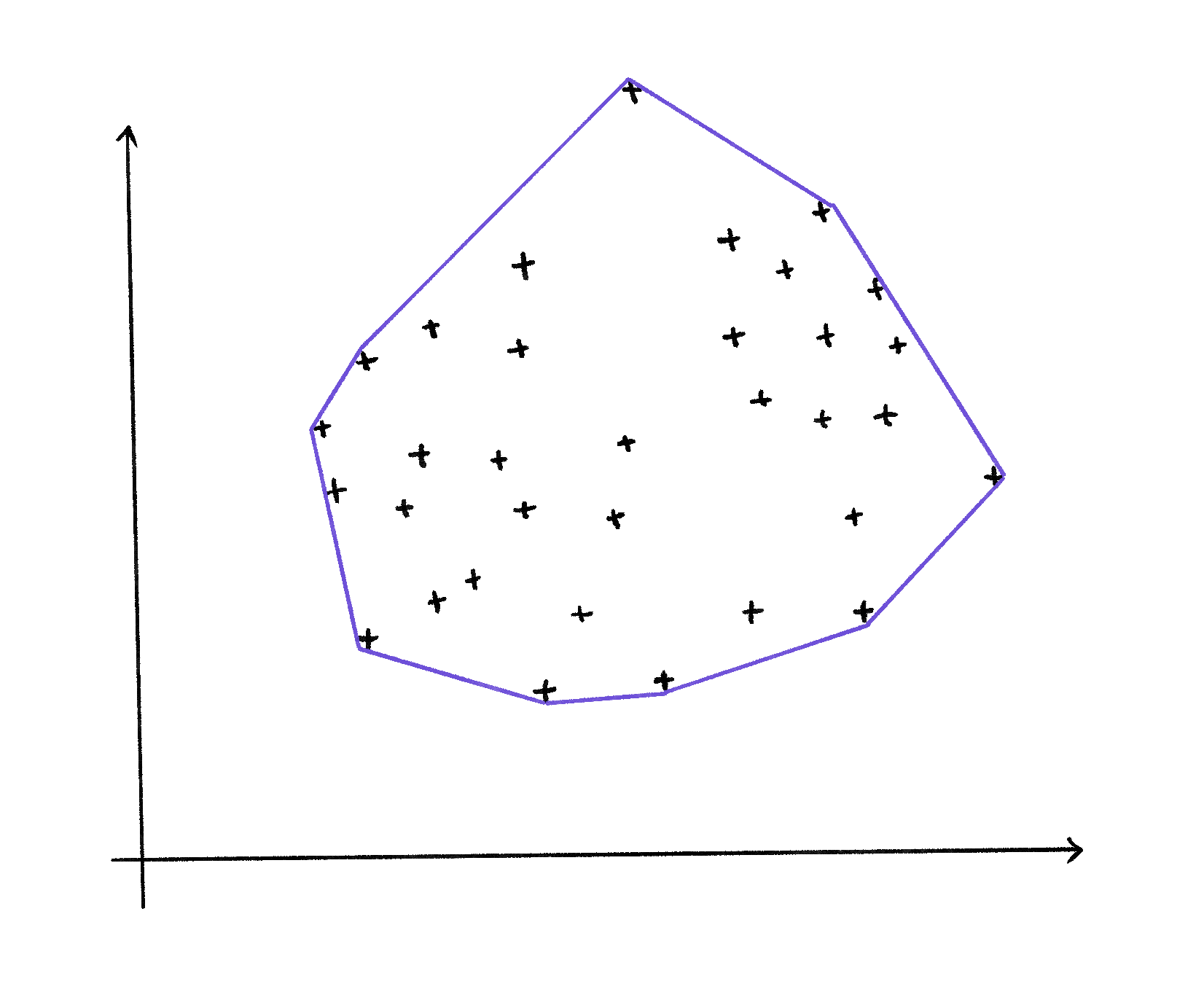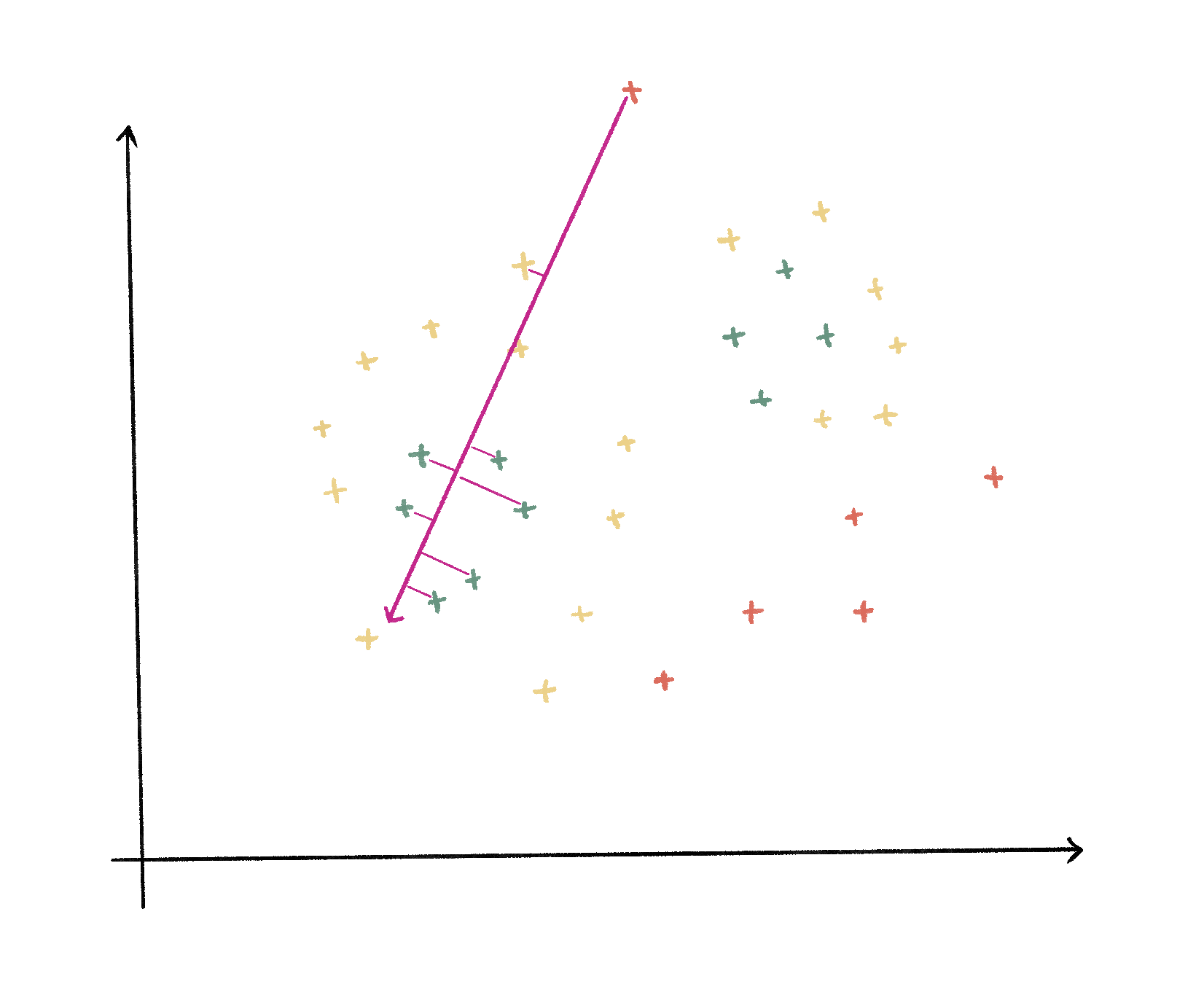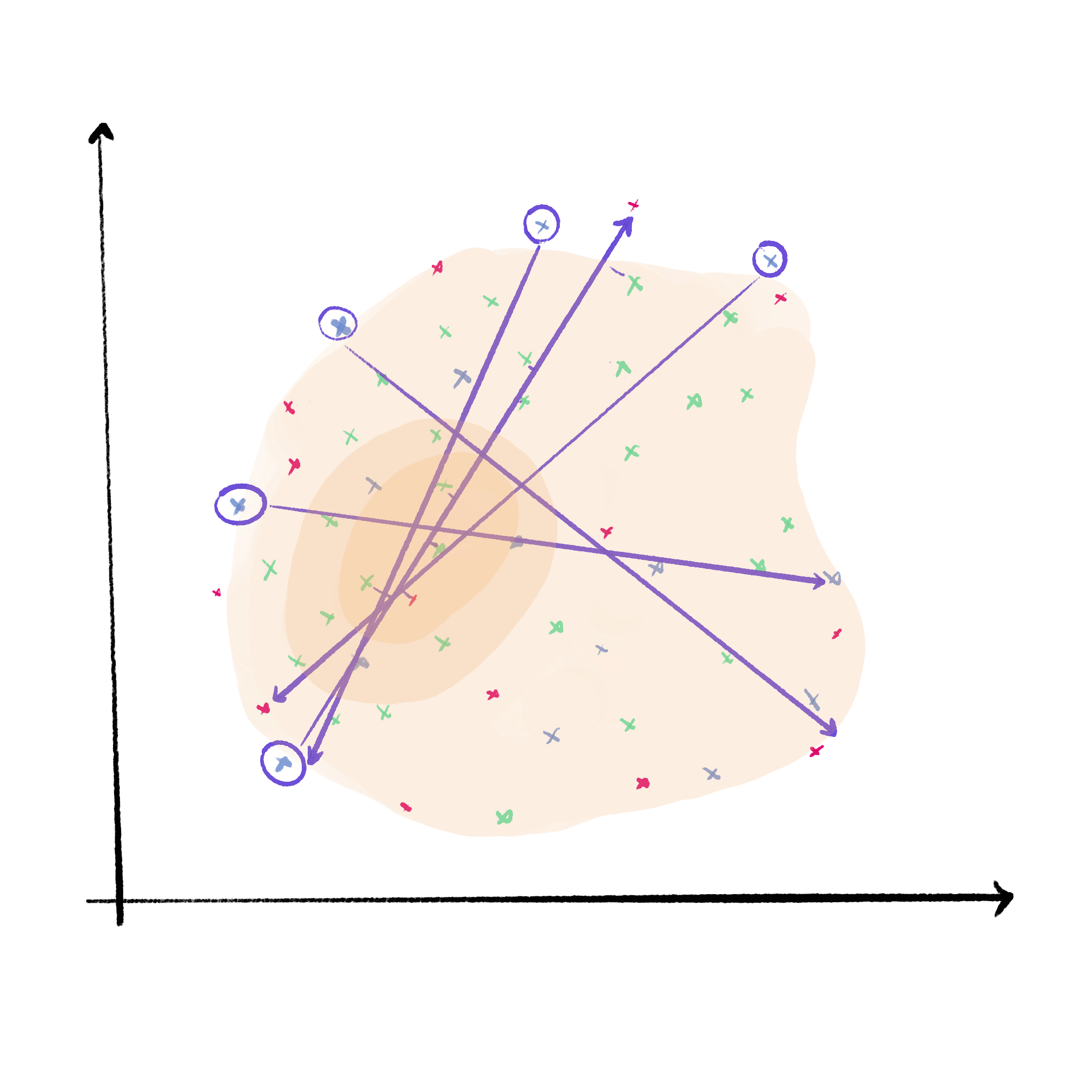
Eight Ball
I have been wondering about what exactly makes a thing interesting, instead of cool. And I came across this idea of integrating machine learning techniques into cultural studies, mainly through the ideas presented in Andrew Witt’s book "Formulations," and his lectures at Harvard in his course “Neural Bodies”, has provided a novel method for analysing and visualising intellectual and cultural artefacts. In this framework, artistic elements, from architecture to language, could be embedded into a machine-learning model as vectors within a multidimensional latent space. The proximity of these vectors to one another indicates their relatedness, allowing for a structured exploration of cultural phenomena. This mathematical representation that Witt initially introduced provides a deeper understanding of the complex interrelations within cultural domains.
Critique
While Witt’s model innovatively uses machine learning to map cultural data, it often emphasises the unique elements at the edges of the latent space, explored through latent walks, bounded by the convex hull that encloses all points. This approach suggests that the most unique, boundary-defining elements are interesting. The reasoning here is that all the latent space's other aspects are linear recombinations of those boundary points. However, focusing solely on these boundary elements can oversimplify the narrative around what is valuable within cultural domains, potentially leading to a static and limited view of cultural significance. The boundary approach may neglect the dense, richly interconnected centres that embody a deeper, more comprehensive understanding of artistic and intellectual landscapes. Moreover, I do not personally agree that there are any artefacts that are more interesting than the others; after all, we need the other artefacts to justify the edge elements.

A bunch of vectors in a 2d Latent space with a hull around it, in this case a latent walk around the edge would be considered something of interest since, all the other points can be expressed as linear recombinations of the edge points.
An Alternative
In contrast to the boundary-focused approach, I propose a model emphasising the density of connections within the latent space. The cultural artefacts that form dense networks of connections and serve as reference points for other ideas arguably provide a more significant contribution to the artistic domain. These interconnected elements act as hubs within the network, offering layered meanings and enabling a broader comprehension of creative and intellectual themes. By shifting the focus from outliers to the densest regions of the cloud, where ideas and references accumulate, we can foster a more dynamic understanding of what merits preservation.

The same image, but borrowing the idea of layered meanings, in this case the arrow and the point closest to them indicate a concept of interest, the colors represent the density of the concept, for example concepts which have more neighbours are green and have a higher "score", the arrow is optimized to find the direction that maximizes the cumulative score in given direction within some distance tolereance

Now repeat the process of creating layered meanings and then find the words and ideas that appear more often in this layering process. Now the words or ideas that have a highest score in that sense, would then give us some underpinning of what makes something of interest in this latent space
Using techniques from machine learning, we could calculate the eigenvectors of this network to create a latent space that shows how words like "anarchism," "democracy," and "politics" cluster together, indicating their contextual and conceptual proximity. In the convex hull approach—essentially a boundary around these clusters—the most interesting linguistic ideas, as per the conventional view, would lie at the edges, such as "anarchism" and, perhaps unexpectedly, "tree," due to its distinct placement in another context. Althugh cool, ask yourself if a "anarchist tree" inspires something in you.
However, we should look toward the more complex, interconnected areas to foster a more nuanced understanding. For example, concepts like "anarchism," "wing," "modern," "birth," "thought," "premodern," "inspired," "alongside," "anarchic," "sects," and "antiauthoritarian" might form a richly layered cluster of ideas. These terms represent a layer of related concepts that offer a more layered and intriguing exploration of political philosophy than simply the outliers. This method allows us to traverse from fundamental concepts to more intricate and nuanced ideas, providing a pathway that adds depth and breadth to our understanding of linguistic and conceptual relationships.
Moreover by repeating this process over and over again we can find points and ideas that appear more often in these layered constructs. In this case I have associated a score associated with this as (how often the point appeared / number of lines drawn). These point would then form a basis for what is more interesting as they underpin more constructs that are the edge points. Here are some of the points that came up most often : "yeux", "transitivity", "tonkin", "saam", "newsday", "depp", "bantu" , "keenan", "judas", "ericaceous". Which seem rather esoteric unitl you look up them meanings of most of them and it makes sense.
This example is illustrated in the Python notebook below.
Future Projections
The method proposed here redefines what we value from our past and opens the possibility of projecting future cultural developments. By focusing on densely connected nodes and continually adding ideas along these richly interconnected slices, we can predict and influence which cultural elements become significant. This approach allows us to strategically simulate cultural evolution by choosing specific seed points—core ideas or themes that we believe will be foundational in the future—and recursively expanding on them, and then trying out new ones (I'm no shape or form, so I approve of editing history for the sake of the future). This capability of projecting into the future based on current focuses enriches our ability to guide cultural development intentionally and meaningfully.
Implications
By concentrating on the interconnected nodes within the latent space, this alternative approach encourages the emergence of new ideas that build upon the existing tapestry of knowledge. This method ensures that the cultural space remains adaptable and can incorporate innovative thoughts that may extend or redefine its boundaries. Moreover, it prevents the intellectual domain from becoming homogenised, promoting ongoing diversity and vitality in cultural expressions.
Reassessing what we consider worth preserving within cultural and intellectual domains requires a shift from focusing solely on conventional boundaries to examining our cultural landscape's interconnected, dense regions. By prioritising the richness of connections over mere distinctiveness, we advocate for a more sustainable, dynamic approach to cultural preservation. This model deepens our understanding of cultural domains and ensures that they continue to evolve, reflecting the true complexity and adaptability of human thought and creativity. This forward-looking approach enhances our capacity to preserve and proactively speculate our cultural future.
Regardless of my pedantic critique of his work, Andrew happens to have been my academic advisor for my thesis. He is an incredible human being and I do think there can be more directed ways of looking at latent walks and generative AI to actually create concepts as opposed to create recombinations of existing things. This was a super nerdy shenan, but this truly has been on my mind. Happy shenaning!